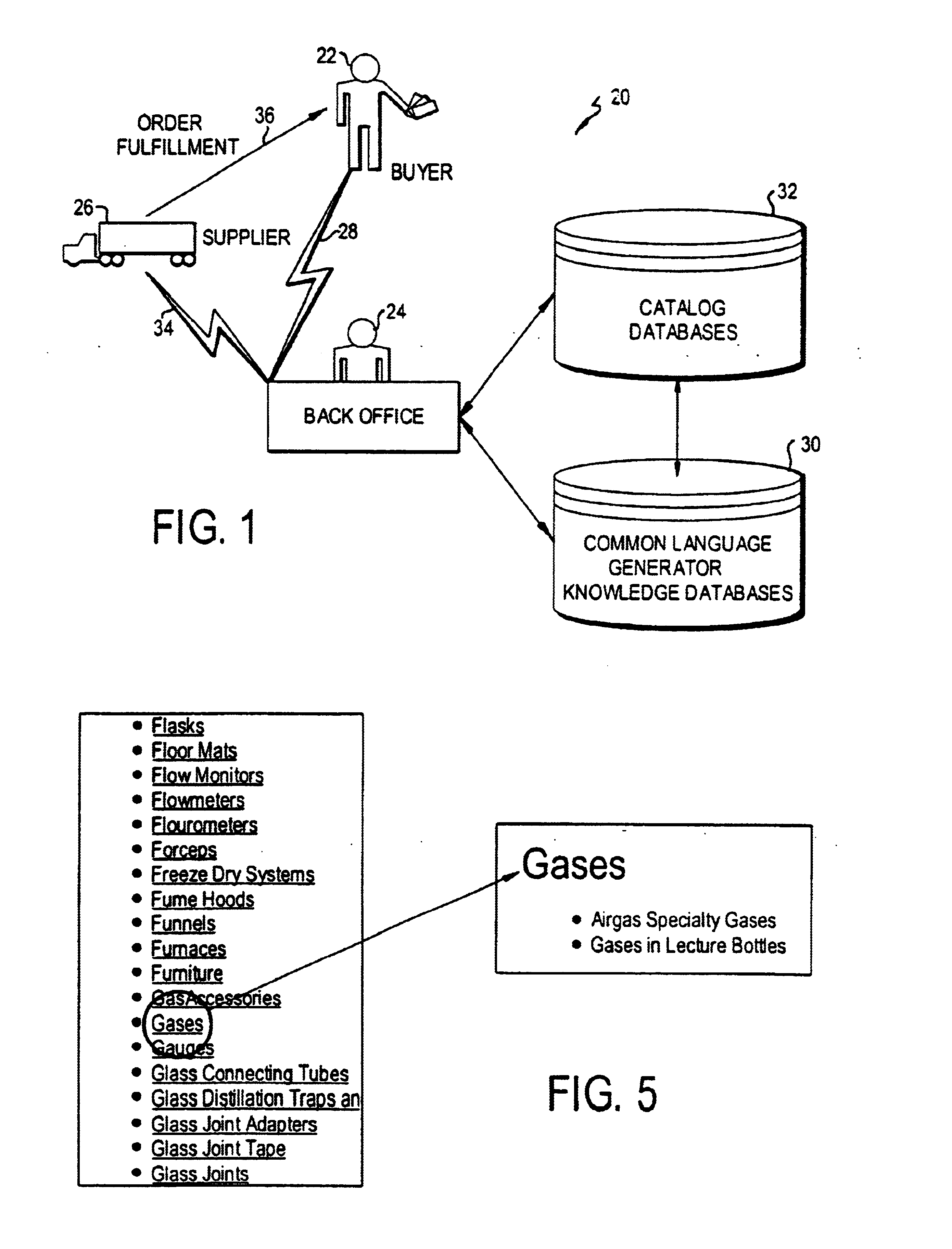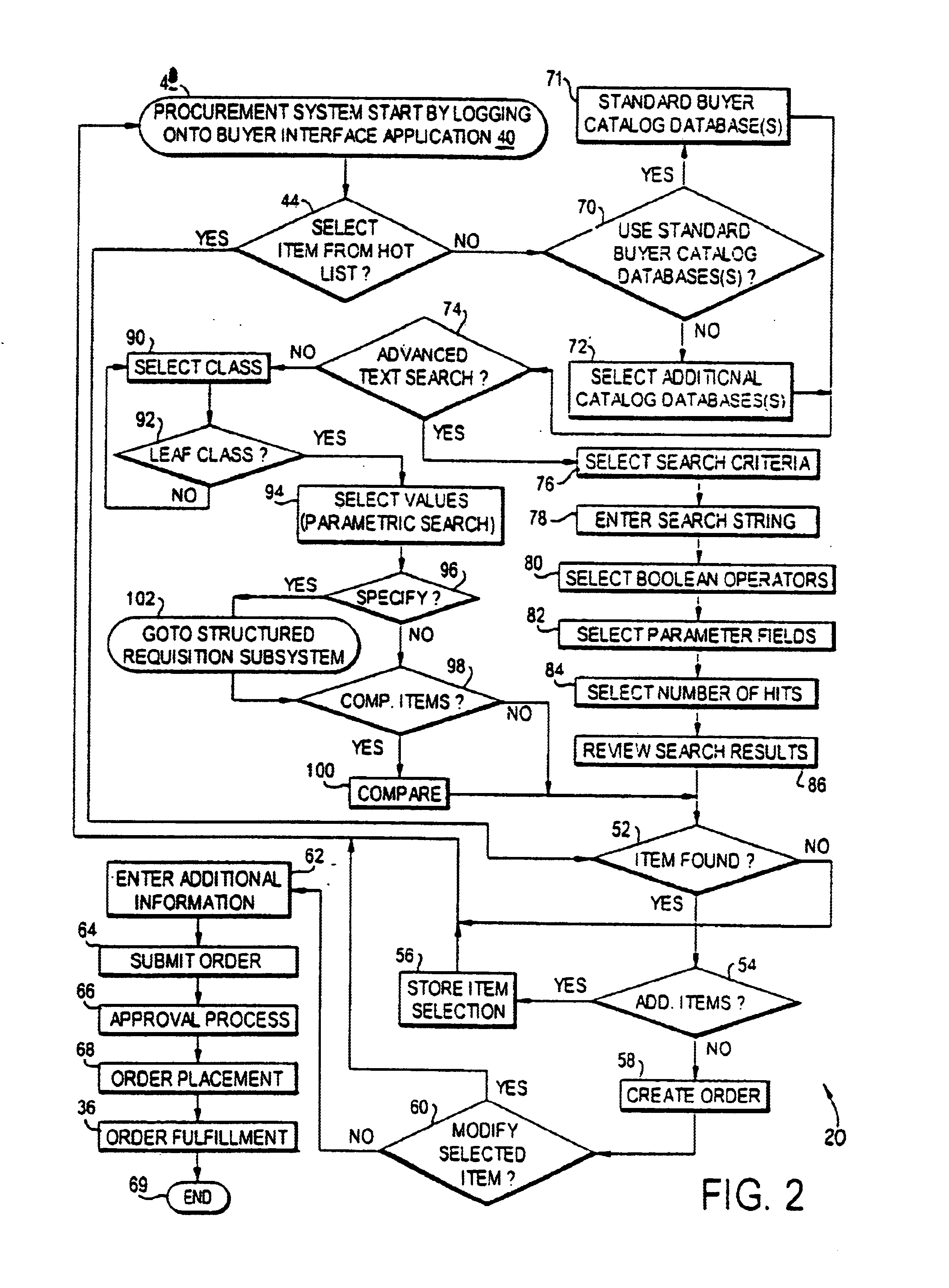Information translation communication protocol
a communication protocol and information technology, applied in the field of procurement system, can solve the problems of slowing down the entire procurement process, increasing the cost of procurement, and no order is even placed, and achieve the effect of easy item comparison
- Summary
- Abstract
- Description
- Claims
- Application Information
AI Technical Summary
Benefits of technology
Problems solved by technology
Method used
Image
Examples
Embodiment Construction
[0025]A procurement system 20 is illustrated in FIG. 1 that includes a buyer 22, a procurement fulfillment organization hereinafter referred to as back office 24, and suppliers 26. As shown by a communications link 28, buyer 22 communicates with back office 24 to search or select item information and to place an order. To facilitate the item order process, back office 24 has one or more catalog databases 32 that are normalized using a common language generator (“CLG”) and corresponding CLG knowledge base 30, discussed in greater detail below. In turn office 24 communicates with suppliers 26 as shown by communications link 34 to get information not in its catalog databases 32 or to forward an order received from a buyer 22. Then the appropriate supplier 26 or its agent ships the requested item directly to buyer 22, fulfilling the order as shown by line 36.
[0026]Procurement system 20 is illustrated in greater detail in FIG. 2. First, buyer 22 logs onto a buyer interface application 40...
PUM
 Login to View More
Login to View More Abstract
Description
Claims
Application Information
 Login to View More
Login to View More - R&D
- Intellectual Property
- Life Sciences
- Materials
- Tech Scout
- Unparalleled Data Quality
- Higher Quality Content
- 60% Fewer Hallucinations
Browse by: Latest US Patents, China's latest patents, Technical Efficacy Thesaurus, Application Domain, Technology Topic, Popular Technical Reports.
© 2025 PatSnap. All rights reserved.Legal|Privacy policy|Modern Slavery Act Transparency Statement|Sitemap|About US| Contact US: help@patsnap.com



